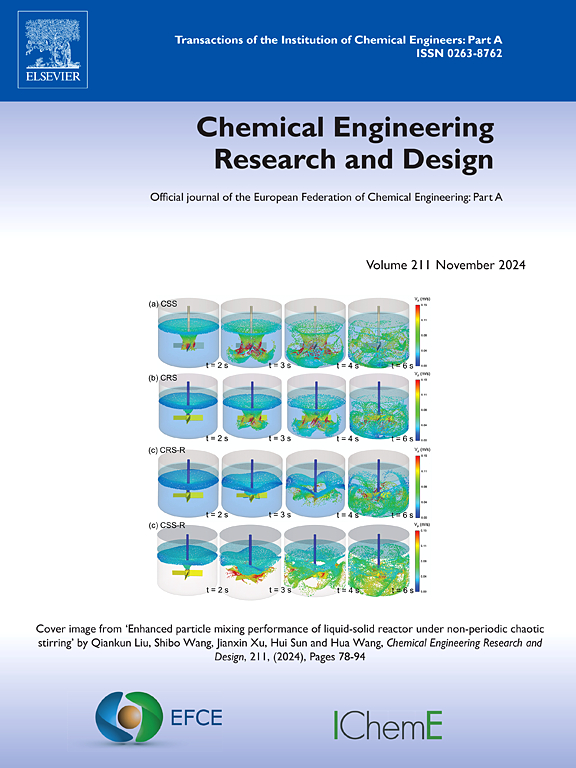Optimisation of microfluidic synthesis of silver nanoparticles via data-driven inverse modelling
IF 3.7
3区 工程技术
Q2 ENGINEERING, CHEMICAL
引用次数: 0
Abstract
The informed choice of conditions to produce nanoparticles with specific properties for targeted applications is a critical challenge for nanoparticle manufacture. In this study, this problem is addressed taking as an example the synthesis of silver nanoparticles (AgNPs) using an inverse modelling approach, where a polynomial function was constructed using synthesis parameters, including nucleation () and growth () constants, collection/storage temperature (T), Reynolds number (), and the ratio of Dean number to Reynolds number (). This function was used to identify the parametric space for hydrodynamic conditions, with other parameters being held constant while employing Latin Hypercube Sampling (LHS) to explore initial guesses in the and domain. Data assimilation techniques were then applied to incorporate experimental data into the model, facilitating parameter identification and optimization, which resulted in improved predictions and reduced uncertainty. The inverse model was evaluated against unseen data, demonstrating good consistency between forward and inverse modelling paths for AgNP size prediction. Experimental data was used to validate the capability of the model to design AgNPs of a targeted size using specific set of chemicals in a microfluidic system. The integration of LHS and inverse modelling through data assimilation is shown to provide a robust framework for addressing uncertainty in nanoparticle manufacture.
通过数据驱动的逆建模优化银纳米颗粒的微流控合成
对于纳米颗粒制造来说,明智地选择条件来生产具有特定性能的纳米颗粒是一个关键的挑战。在本研究中,以银纳米颗粒(AgNPs)的合成为例,采用逆建模方法来解决这一问题,其中使用合成参数构建多项式函数,包括成核(k1)和生长(k2)常数,收集/储存温度(T),雷诺数(Re)和迪恩数与雷诺数的比值(De/Re)。该函数用于识别流体动力条件的参数空间,其他参数保持不变,同时使用拉丁超立方采样(LHS)来探索Re和De/Re域中的初始猜测。然后应用数据同化技术将实验数据纳入模型,促进参数识别和优化,从而改进预测并减少不确定性。根据未见数据对逆模型进行了评估,证明了AgNP大小预测的正演和逆建模路径之间具有良好的一致性。实验数据用于验证该模型在微流体系统中使用特定化学物质设计目标尺寸AgNPs的能力。通过数据同化,LHS和逆建模的集成为解决纳米颗粒制造中的不确定性提供了一个强大的框架。
本文章由计算机程序翻译,如有差异,请以英文原文为准。
求助全文
约1分钟内获得全文
求助全文
来源期刊

Chemical Engineering Research & Design
工程技术-工程:化工
CiteScore
6.10
自引率
7.70%
发文量
623
审稿时长
42 days
期刊介绍:
ChERD aims to be the principal international journal for publication of high quality, original papers in chemical engineering.
Papers showing how research results can be used in chemical engineering design, and accounts of experimental or theoretical research work bringing new perspectives to established principles, highlighting unsolved problems or indicating directions for future research, are particularly welcome. Contributions that deal with new developments in plant or processes and that can be given quantitative expression are encouraged. The journal is especially interested in papers that extend the boundaries of traditional chemical engineering.
 求助内容:
求助内容: 应助结果提醒方式:
应助结果提醒方式:


